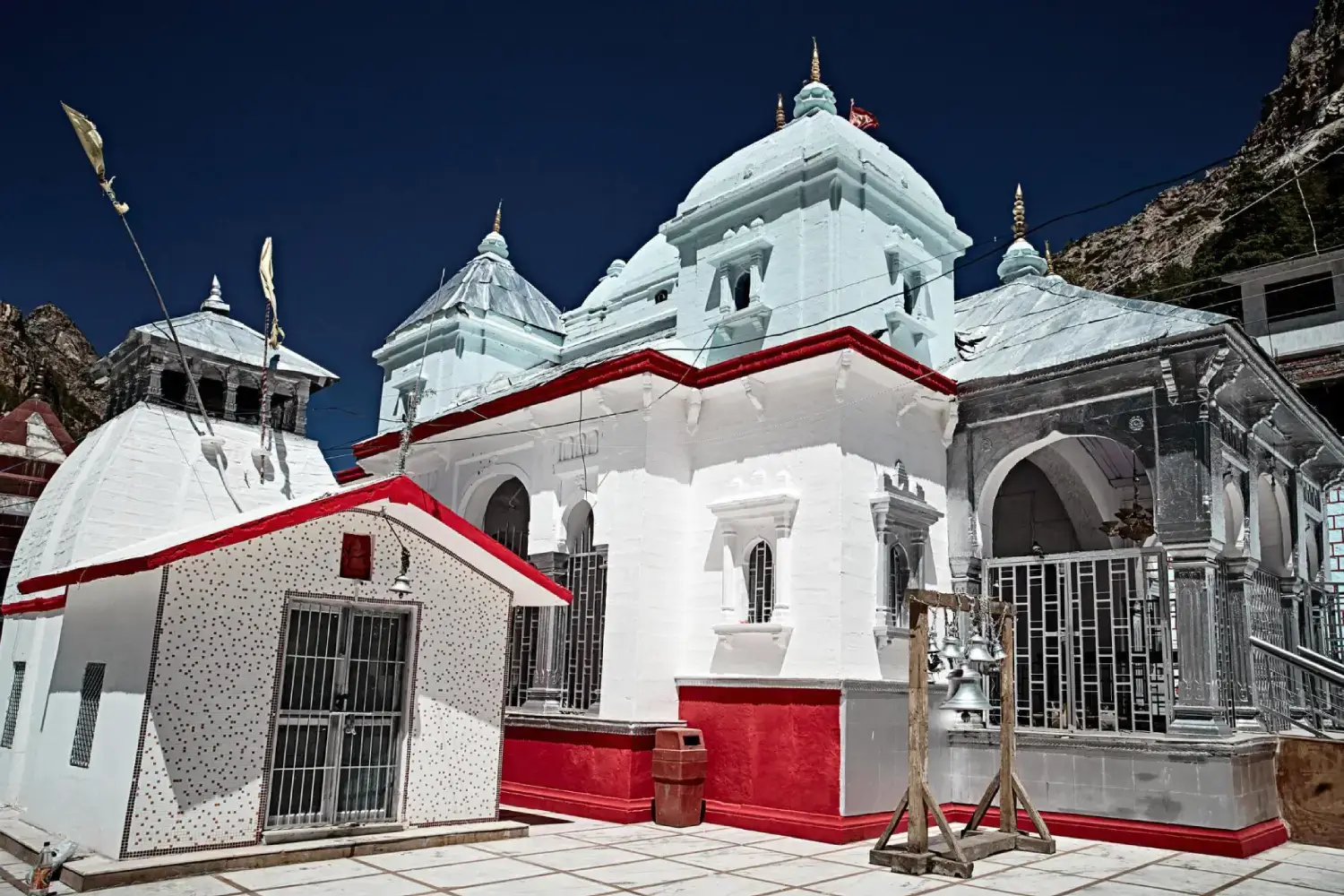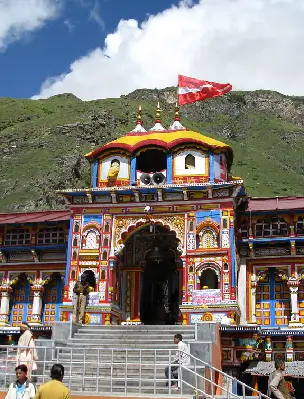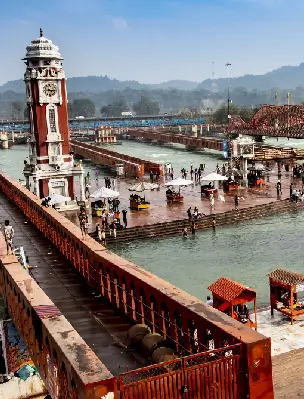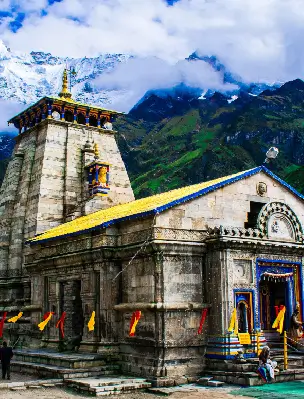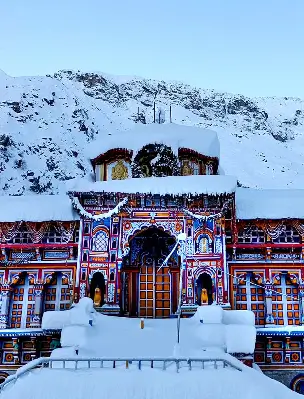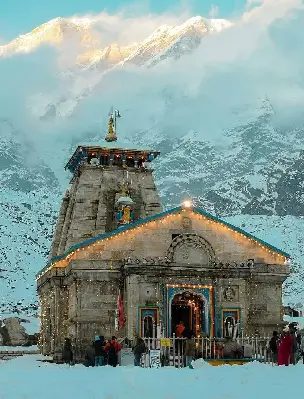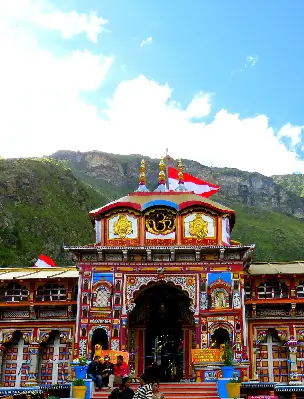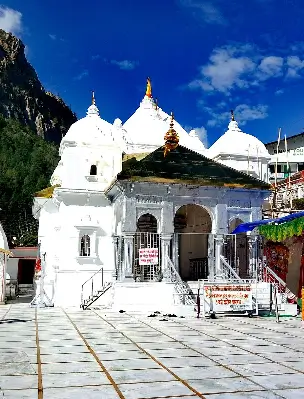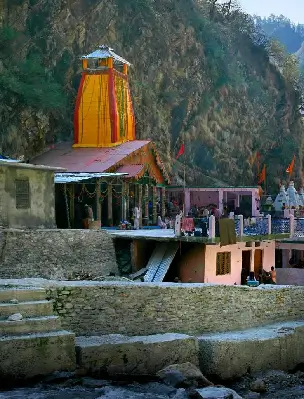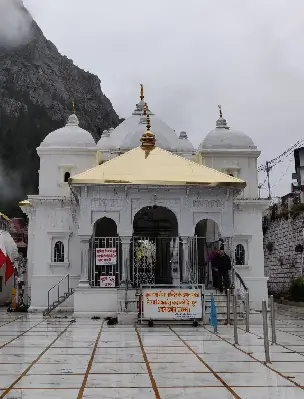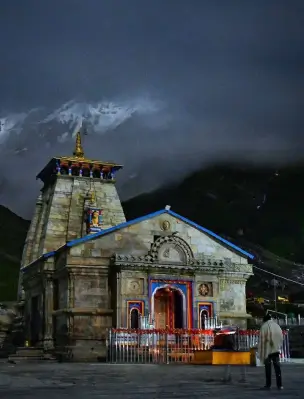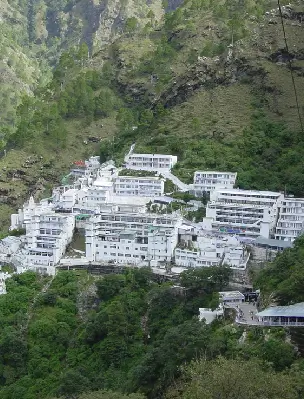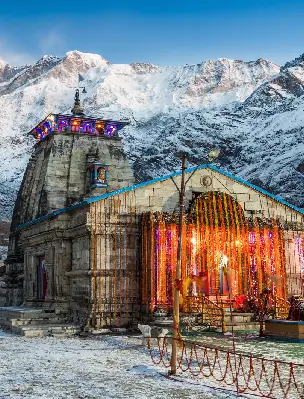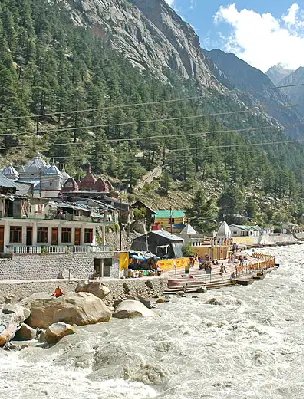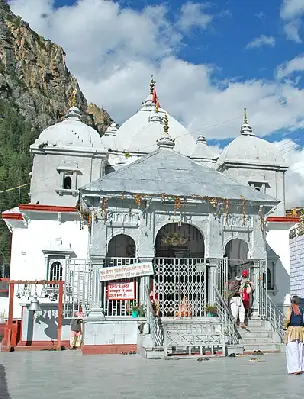History of Shri Gangotri Temple
Read in-depth insights on the history of Shri Gangotri Dham Temple, dedicated to Goddess Ganga, the second main stop of the Himalayas Chardham Yatra and the origin point of the River Ganges from Gaumukh.
Ganga, the largest and the most divine river in India, is the centre of this nation's age-long culture and civilisation. This ever-flowing, never-changing divinity has a profound religious significance in Hinduism. This mighty river originates in the Himalayas when white Gangotri glaciers melt to form a streaming flow of pure and holy waters. Gangotri is the place where the divine river Ganga, initially called Bhagirathi, is worshipped as Goddess in the Gangotri Temple. Thus, Gangotri Temple in Himalayas is a significant religious sanctum in Indian History.
Gangotri Temple is one of the most sacred places in Hinduism and one of the four prime shrines to visit during the spiritual journey of Char Dham of Uttarakhand. The pilgrim town of Gangotri has been the spiritual centre for Hindus for ages, and the river Ganga has been mentioned in most, if not all, religious and mythological scriptures. Pilgrims, not only from India but from around the globe visit Gangotri Dham every year, as a mere touch of the water in Gangotri is believed to purify and cleanse people of all their wrongdoings.
Gangotri - Mythological Origins & Legends
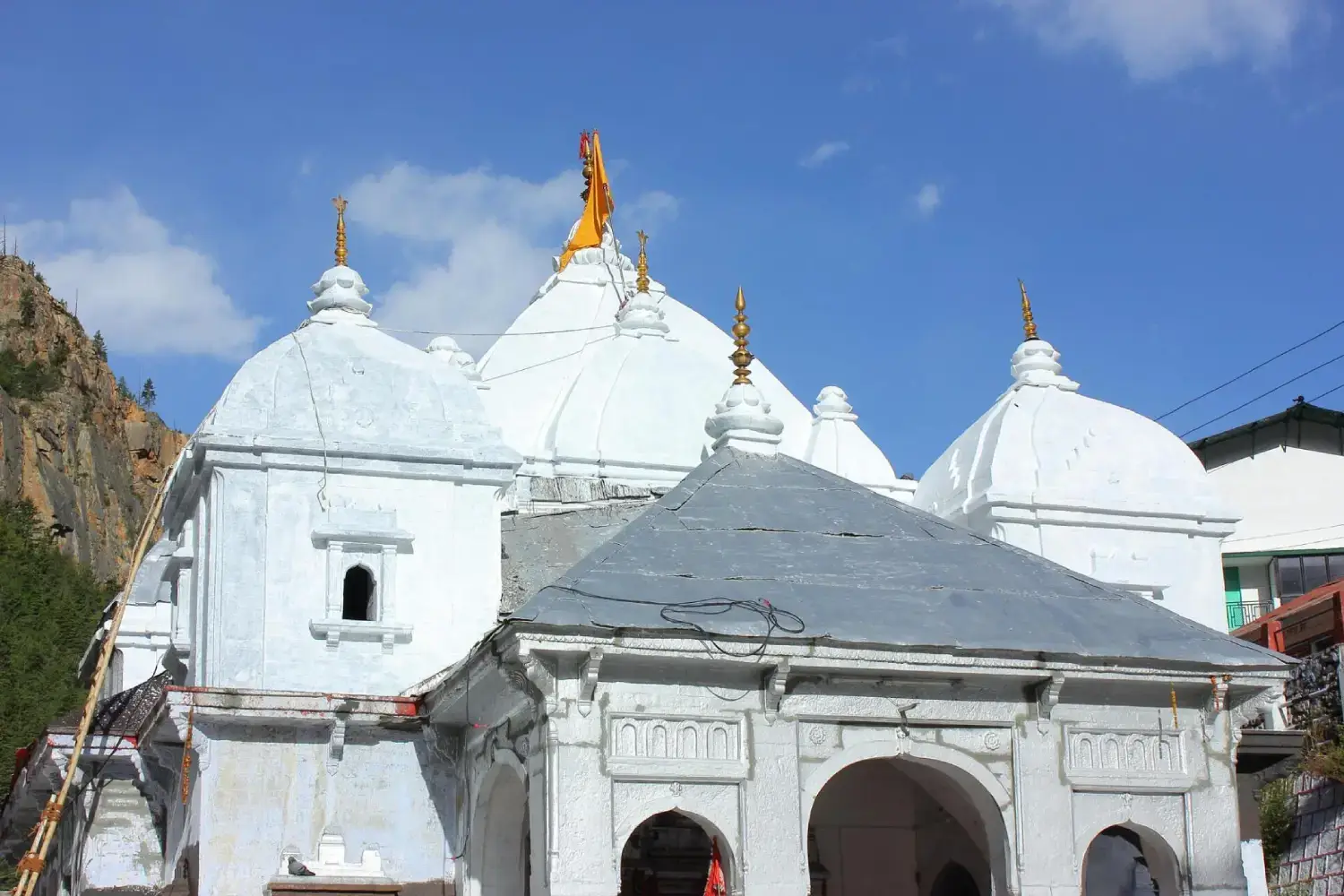
Gangotri is the origin place of the River Ganga in the Himalayas, and its origin has several legends, mythology, and stories including a story of great penance by King Bhagirath and a great war between God and Demons.
According to the most widespread belief, Goddess Ganga is a deity in the form of a river which originally flowed in heaven. King Bhagirath, a descendant of King Sagar and ancestor of Lord Ram of Kosala kingdom, wanted to end the curse of sage Kapila on his ancestors. As only the holy river Ganga could end the curse and bestow nirvana to his ancestors, King Bhagirath did penance for years and agreed Lord Brahma to send Ganga to earth.
Though Brahma was worried of the strong flow of Ganga that could destroy life on earth, if it fell directly to earth. Thus, Bhagirath continued his penance to please Lord Shiva, who took the might of Ganga's flow by holding her into his hairs. Lord Shiva then channelled the flow of Ganga gently from his matted hair to the Himalayas. This is the reason, Lord Shiva is also called Gangadhar, which means holder of Ganga. King Bhagirath then worshipped river Ganga in Gangotri first, thus Gangotri Temple’s history is believed to have started from this period.
Another legend about Gangotri is that this place is where God and demons fought a great battle. According to the legend, Demons had gained control over heaven and were wreaking havoc on earth. To defeat the demons, deities needed Amrit (the elixir of life) from Mount Kailash, guarded by the demon Shumbh. Lord Shiva fought Shumbh at Gangotri and helped bring peace to the world.
Historical Background of Gangotri Temple
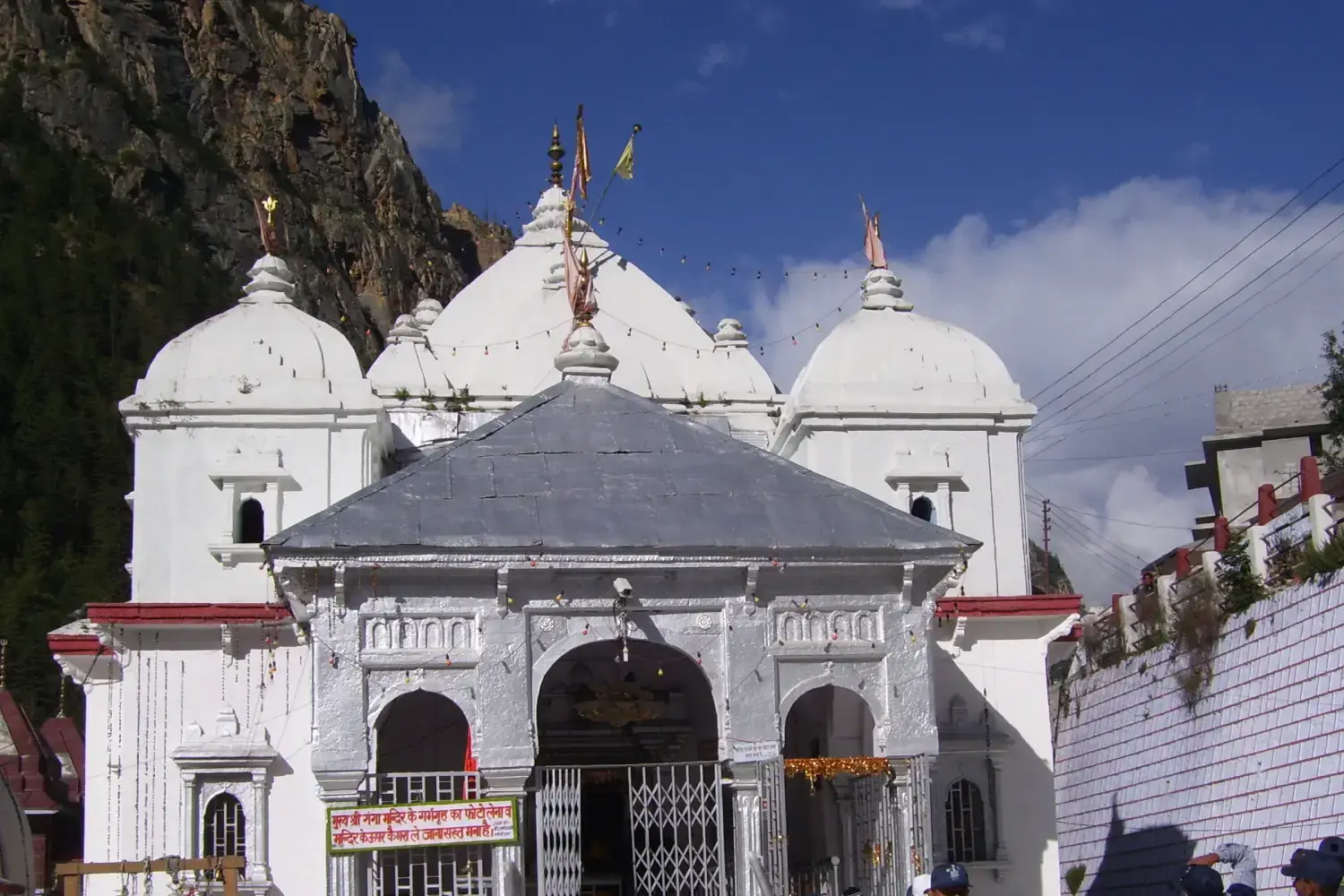
The pilgrim town Gangotri, in Uttarakhand, has been revered in the Hindu religion from time immemorial. It is where Hindus worship the most significant river of the Indian subcontinent, the Ganga, in the form of a Goddess.
According to the beliefs, Lord Ram visited Gangotri during his exile period and Lord Hanuman also visited and worshipped goddess Ganga in Gangotri once. At present, the Gangotri Temple is the place where devotees worship the goddess Ganga, but the temple was not the place of worship in Gangotri originally. Though Gangotri was visited, even in ancient times, by pilgrims from every nook and corner, there was no temple or idol of Goddess Ganga there. Rather, devotees and priests used to worship river Ganga's stream instead. Every ritual was performed at the bank of the river itself. It was in the 18th century when Nepalese Gorkha general Amar Singh Thapa built the Gangotri temple in Uttarakhand, which we see presently. Further, in the early 20th century, Jaipur's king Madho Singh II restored the temple when it was in disrepair.
Architecture of Shri Gangotri Dham Temple

Gangotri Temple has the architecture that imitates the pure and serene energy of Ganga. This perfectly white temple contrasts with the mountain peaks of the Himalayas in summer. The temple was built by 18th century Gorkha general Amar Singh Thapa in north Indian Nagara-style architecture. It is built with gleaming white granite amid an impeccably stunning blue-green backdrop. The temple stands as a simple and humble-looking structure, complimenting the serene atmosphere of the Himalayan valley.
Gangotri temple has five tall shikhara, three main cupolas that bear golden spires along two little ones. The 20 feet tall temple also displays the traditional Garhwal style and art on the doors, walls, and roofs. The simple carvings on each element of the temple exude a serene aura around the devotees. Architecture of Gangotri Mandir is also influenced by Katyuri style, which originated in Nepal. The shire has two parts, a Garbhagriha and a Sabhagriha. Pilgrims are first directed to the Sabhagriha or Assembly hall, where devotees sit and pray for as much time as they can. The Garbhagriha enshrines the idol of the supreme deity, the goddess Ganga. Garbhagriha has a raised platform on which the main idol rests while other idols of deities like Goddess Yamuna, Saraswati, Annapurna, and Lakshmi surround the main idol.
There is a statue of Adi Shankaracharya, the 8th century sage known to influence the Chardham of Uttarakhand pilgrimage circuit, and a statue of Bhagirath placed inside the temple. There are four more temples in the complex surrounding the Gangotri temple, that are dedicated to Lord Shiva, Ganesh, Hanuman, and Bhagirath.
You Might Also Like to Read
- The History of Kumbh Mela
- Chardham Yatra Offline Registration
- Tungnath Temple Opening & Closing Dates
- 12 Jyotirlinga Temples in India
- Madmaheshwar Temple Opening & Closing
- Badrinath & Hemkund Sahib Helicopter Yatra Services
- Kedarnath Yatra Helicopter Booking Guide
- Online/Offline Registration information for Chardham Yatra
- Char Dham Yatra by Helicopter
- Top Things to Carry with Chardham Yatra
- Best Places to Visit in Uttarakhand
- Best Places to Stay in Badrinath
- Best Places to Stay in Kedarnath
- Rudranath Temple Opening & Closing
- Online Puja Booking at Badrinath & Kedarnath Temple
- Places to Visit Near Badrinath Dham
- Akshaya Tritiya Festival Information
- Best Places to Explore Enroute Kedarnath Dham Yatra
- Ranikhet Tourism- Top Places to Explore & Things to Do
- Kalimath Temple Information
- History of Shri Kedarnath Temple
- Badrinath Temple History
- Gangotri Temple History
Popular Tours
Book The Tour
Char Dham Temples
Hotels in Chardham Circuit
Char Dham Tour Packages
- Char Dham Yatra From Delhi
- Chardham Yatra From Mumbai
- Char Dham Yatra From Ahmedabad
- Chardham Tour with Hemkund Sahib
- Chardham Yatra by Helicopter
- Char Dham Yatra with Vaishno Devi & Amritsar
- Chardham Tour with Gomukh Trek
- Char Dham Packages From Bangalore
- Chardham Yatra From Chandigarh
- Char Dham Yatra with Auli
- Char Dham Yatra From Hyderabad
- Char Dham Yatra with Vaishno Devi, Jwalaji & Amritsar
- Char Dham Yatra From Chennai
- Chardham Packages From Bhopal
- Char Dham Yatra by Luxury Vehicle
- Char Dham Yatra with Satopanth Lake
- Char Dham Yatra with Panch Badri Tour
- Char Dham with Valley of Flowers
- Chardham Yatra with Mahavatar Baba and Nainital Tour
Do Dham Yatra
- Badrinath Kedarnath Yatra From Haridwar
- Badrinath Kedarnath Yatra
- Gangotri Yamunotri Yatra
- Gangotri Yamunotri Yatra from Haridwar
- Kedarnath Badrinath Yatra with Hemkund Sahib
- Kedarnath Badrinath Yatra with Valley of Flowers
- Kedarnath, Badrinathdham With Lake Of Nainital
- Yamunotri, Gangotri with Lake of Nainital
Ek Dham Yatra
- Badrinath Pilgrimage Tour
- Kedarnath Pilgrimage Tour
- Gangotri Pilgrimage Tour
- Yamunotri Pilgrimage Tour
- Kedarnath Yatra By Helicopter
- Badrinath Dham Yatra from Haridwar
- Badrinath Yatra with Hemkund Sahib
- Badrinath Yatra with Valley of Flowers
- Gangotri Dham Yatra with Gaumukh
- Kedarnath Dham Vasuki Tal Trek
